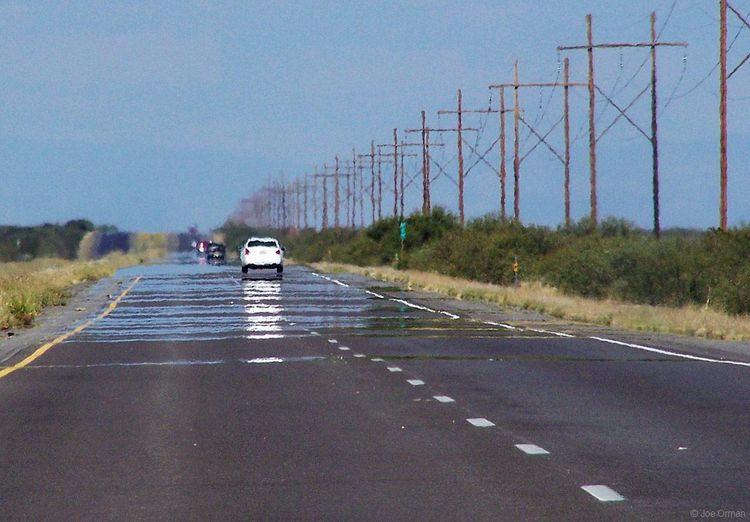@sozobe,
sozobe wrote:
...that part of why roads are black is to help with snowmelt, and that it would be considerably more dangerous/ expensive if they were lighter colored.
Still seems like it could be done in areas without snow, though.
A lot of highways in California have what looks like a light gray cement finish to them rather than the dark asphalt. I remember a lot of eye strain from the sun's reflection and water mirages when driving on those roads. The heat waves rising up off the surface in the distance looked like water flooding the road.
Found a good explanation and photo that shows what I mean. I guess it happens on asphalt surfaces too.

The photo above is from NASA's Earth Science Picture of the Day website, which offers this explanation:
"The effect is caused by a thin layer of hot air just above the ground. The difference in refractive index between the hot air at the road surface and the denser, cooler air above it causes the boundary to act like a mirror: distant objects are reflected...The 'water' is actually a reflection of the blue sky, but a close look at this image also shows reflections of a car, power poles, bushes, a mile marker, and roadside grass. Because the reflection occurs solely at very shallow angles, the mirage appears only in the distance and continually recedes as one moves towards it."